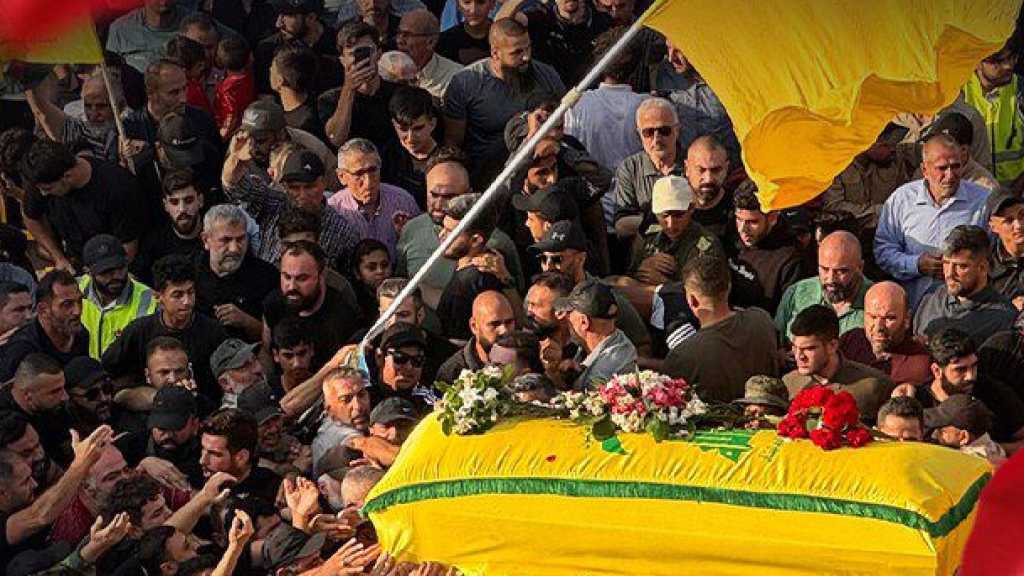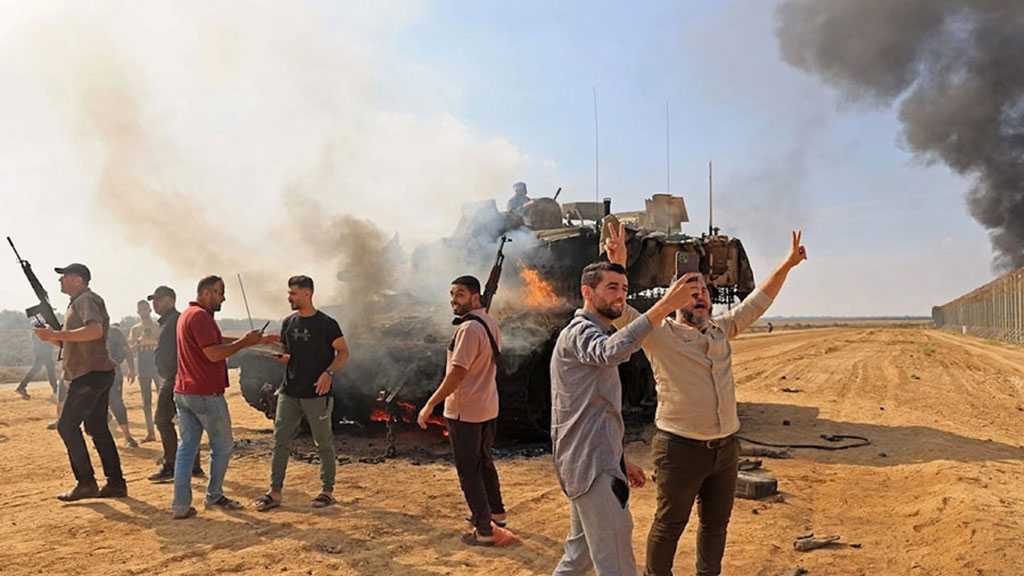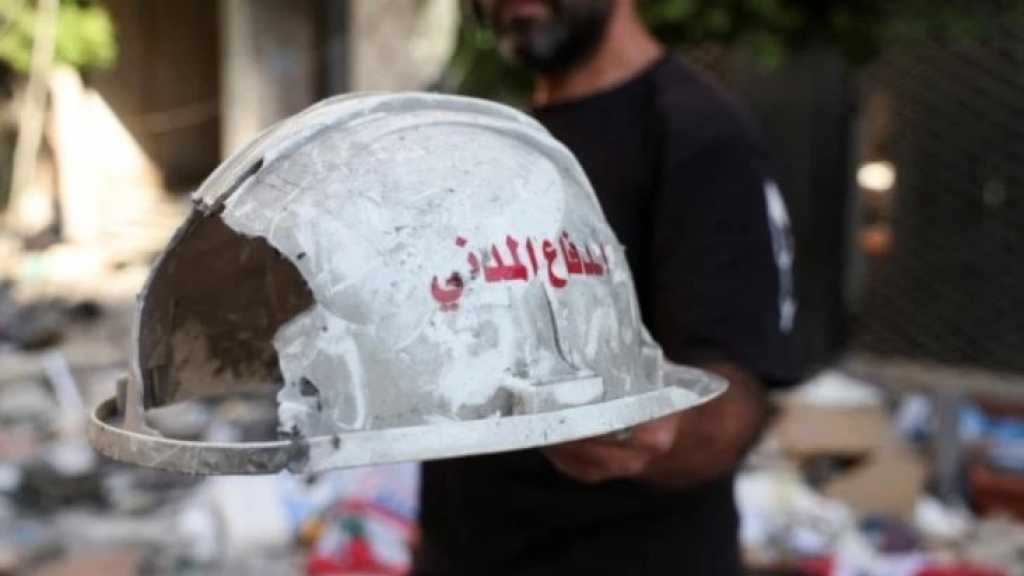Martyr’s Day: The Notion of Ending Hezbollah Is a Grand Illusion.

Mohammad Raad - Head of the Loyalty to the Resistance Bloc
Al-Akhbar Newspaper
On Hezbollah’s Martyr’s Day, we move from the monotony of mere living to the vastness of true life, from the inferiority of illusion to the realism of vision and engagement, and toward the grandeur of hopes grounded in genuine conviction.
In our belief, the martyr is neither a prophet nor an infallible Imam, but a human being distinguished by his awareness of life and existence, by the sincerity of his commitment to the values that give life its true meaning, and by the seriousness with which he bears his human and spiritual responsibility toward himself, his society, and every sphere in which he deems himself capable of contributing to its preservation, reform, and advancement, whether it be a neighborhood, a town, a homeland, a region, a continent, or the entire world.
Whether that contribution is partial or complete, what matters most is that it be guided by a vision that respects the human being—his position, his role, and his relationship with existence—from the Creator Himself to every aspect, phenomenon, and component of creation, especially the world of humankind in its individuals, communities, and nations. It means carrying the burden of liberating humanity, reforming its conditions, organizing its endeavors and relations, and developing its affairs.
According to this belief, the martyr is a pioneering, visionary, and dynamic individual—free from selfishness and corruption, alien to the repulsive human traits of greed, hatred, hostility, and the cancellation of others. Most importantly, he is endowed with free will, determination, and resolve.
That is why people naturally perceive the martyr as a descendant of the prophets, not by lineage, but by faithfulness and adherence. Accordingly, he assumes in human societies, especially in Islamic ones, the position of a model and an example. And how could it be otherwise, when he has given his entire being for the sake of others—out of love for them, concern for them, and for their future—sacrificing what is dearest to him to defend them, protect their homeland, preserve their rights, and realize their interests?
This readiness for abundant generosity, coupled with the sincerity of practice, grants the martyr a forward-looking vision and a keen sensitivity to all signs of injustice, tyranny, aggression, annihilationist tendencies, racial behavior, and arrogant domination exhibited by enemies—who, in reality, embody the complete opposite of the qualities, values, motives, and aspirations that characterize martyrs.
We believe that religion, in its role as the bond between God and humanity, represents the best framework for expressing the martyr’s place in life, as well as the motivations and outcomes toward which his contributions ultimately lead, both in this worldly life and in the Hereafter.
The most prosperous, virtuous, and respectful society—one that safeguards its members, influences its relations positively, and is secure, stable, psychologically reassured, and open to engaging with ideas and behaviors realistically and judiciously, without falling into blind conformity or contrariness, and which is cohesive, united, strong, and prepared to defend and protect values as well as existence itself—is certainly the society that houses the projects and legacy of martyrs among its people.
Perhaps the most dangerous and widespread deterrents promoted by tyrants to prolong their domination and oppression are those that rob peoples of the will to rise, to achieve freedom, and to uphold dignity. These include shaping lives according to formulas of acceptance of the status quo, convincing people of their inability to change it, flattering corrupt despots, competing for favor in their eyes, and joining their schemes.
Martyrs, however, are the members of society most immune to such defeatist behavior, which forms a key pillar for foreign invasion or hostile domination. They are also the voice of noble humanity, alerting society to the necessity and possibility of changing reality, rejecting a life of humiliation, resisting subjugation under the logic of force and terror, and refusing to yield to the will of evildoers, forces of oppression, monopolization, and the abhorrent selfish and racist tyranny.
The supreme martyr, His Eminence Sayyed Hassan Nasrallah, His Eminence Sayyed Hashim Saffidine, and all the martyred leaders and fighters who fell confronting the Zionist enemy and resisting its aggressive war on Lebanon or its genocidal war on Gaza, as well as all the martyrs who have died in the course of the Islamic resistance’s struggle—from Ahmad Qasir, the pioneer of the era of selfsacrificing martyrdom operations, to his counterparts who carried out a number of selfsacrificing and precision operations, to the martyrs of clashes, raids, and ambushes, and the martyred leaders of the founding generation such as the Sheikh of Martyrs Ragheb Harb and the Sayyed of the Resistance’s Martyrs Sayyed Abbas al-Moussawi and his wife and child—indeed, all the martyrs of our proud, resistant, protective, sacrificial, and patient people, who have offered and given in defense of Lebanon and all its components, including many of its sons who became martyrs, wounded, and prisoners—some of whom still endure the suffering and ordeal of injury and oppression.
This blessed procession does not so much constitute a tally of losses for the Islamic resistance as it accumulates stores of guidance, encouragement, and direction to continue the missions, fulfill duties, and guard against the worst possibilities until the appointed hour of sure victory, the day when the enemies will find no refuge from the decree of God.
Immediately after the launch of Operation Al-Aqsa Flood, which shook the Zionist entity and exposed levels of its failure, most indicators and facts pointed to the conclusion that the Zionist enemy, along with the American and Western patrons and backers of its usurping entity, would regard that operation as an existential threat to themselves and to the arrogant West’s interests in our region. The response, it was expected, would not be limited to striking the front that carried out the operation but would target all active resistance movements in Palestine and around it—foremost among them, certainly, the Islamic Resistance in Lebanon—because of what it represents in mobilizing all the resistance movements in the region, because of what the enemy has been preparing for since its defeats at the hands of that resistance in 2000 and 2006, and because of its perception of the resistance’s capability and preparations to exert field pressure on its northern occupied territory.
Therefore, it was natural and inevitable that the Islamic Resistance should demonstrate to the Zionist enemy its readiness and vigilance regarding whatever the enemy was planning—whether it chose to begin its aggression against Gaza first and then Lebanon, or to adopt some other priority.
Accordingly, there is no room for some Lebanese political actors to grandstand by claiming that the Islamic Resistance decided to start the war against the Zionist enemy, especially since the enemy itself, and its international backers, openly revealed their intent to exploit Operation Al-Aqsa Flood and its consequences to eliminate all resistant presence in the region.
Nevertheless, the Islamic Resistance confined the enemy on the Lebanon front without launching a full-scale war against it, because it did not see any strategic benefit to such a war for the Resistance or for Lebanon, given its precise understanding of many factors that prevented anticipating satisfactory and decisive outcomes.
Many people accept the realism of the Resistance’s decision at that time; others, while acknowledging that realism, believe that the Resistance’s conduct and some of its political rhetoric then were perhaps overly reassuring to the “Israeli” enemy, unintentionally suggesting a determination to avoid an all-out war.
There will be plenty of time later to debate that matter. But events moved step by step toward a decisive confrontation in which the enemy sought to eliminate Hezbollah’s existence by targeting its secretary-general and his immediate successor, a number of senior leaders, and several cadres whose ability to take part in the field was disrupted because they were struck in the pager and wireless device massacre. The enemy then went on to carry out what it called a maneuver for a ground incursion, intending to wipe out groups of resistors in the area south of the Litani River and—depending on how the fighting progressed—potentially to reach the Awali River bridge, and perhaps beyond.
But the martyrdom-style resistance and the courage the fighters displayed on the front lines disappointed the enemy and dashed the hopes of its American backers, forcing it, reluctantly, to heed American advice and accept the ceasefire declaration referred to in Hezbollah’s recent open letter. That letter made clear there is no clause in the ceasefire text requiring the disarming of the resistance before the enemy halts its hostile actions.
It has also become clear and certain that what the enemy failed to accomplish militarily—ending Hezbollah’s existence—was taken up by its international patrons, regional collaborators, and local opportunists through political pressure on the Resistance and on the Lebanese state and government to achieve that objective. In this context the government’s grievous decision on August 5, followed by another on August 7, has given the enemy a pretext to insist on disarming the resistance as a condition for stopping the violations and assaults that continue to be committed against the Lebanese and their country.
Conversely, it has also become clear to everyone that ending Hezbollah in Lebanon is a grand illusion—an insurmountable task—and persisting in that insistence is a dangerous threat to the stability of Lebanon, its people, and the region.
Still, the stubborn keep trying, even as reality contradicts their claims. Their failure is certain and inevitable, because today the Resistance is not a hollow organization of individuals without leadership or a popular base; it is a cohesive, committed, purpose-driven force led by a prudent and courageous secretary-general, supported by loyal comrades who advance the cause alongside him.
This force is embraced by a proud and noble people who exemplify steadfastness, commitment, patience, and sacrifice. Ever present among them are the righteous martyrs, who stand as the decisive testimony to the resistors and their communities and as proof of the sound methodology that frustrates the aims of the Zionist enemies and their partners.
History dears witness that martyrs are, at root, the leaders of victories; the enemy is defeated so long as it fails to achieve a complete victory, and the Resistance is victorious so long as it prevents the enemy from achieving its objectives.



